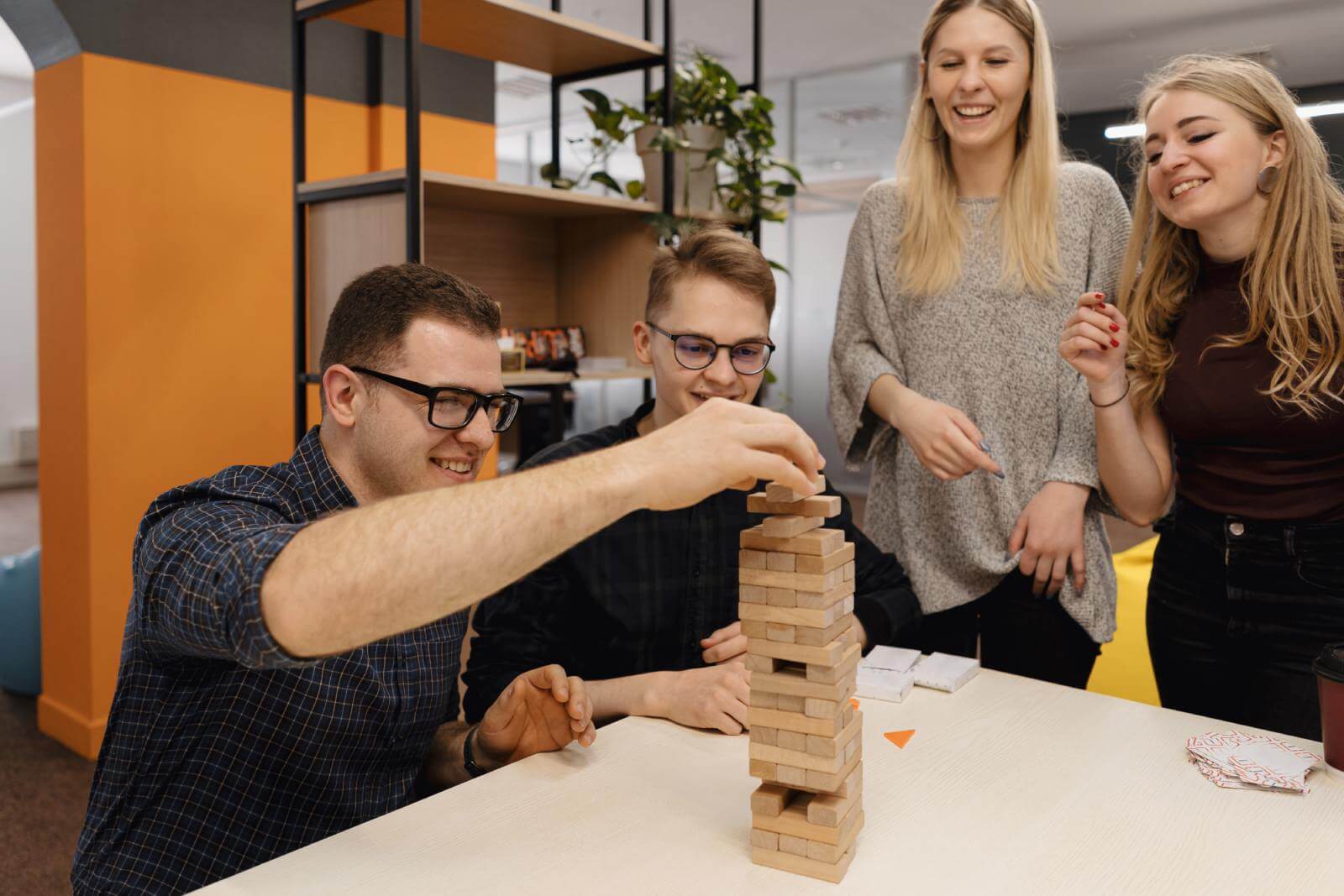Gamification in the Workplace: Boosting Engagement and Motivation – The Largest IT Park in India Shows You How
Today, young professionals work in a competitive business environment. They need avenues for motivation and engagement to prevent burnout and enhance productivity. One innovative strategy that has gained traction is gamification. As the first and largest IT hub in India, we believe that by integrating game-like elements into the workplace, companies can boost engagement, enhance productivity, and create a more enjoyable work environment. Let’s explore the benefits of gamification in the workplace in this blog.
What is Gamification?
Games are fun – they involve an amount of uncertainty, which is challenging, and the rules help put things in perspective. When these very same qualities of games are set in a non-game context, i.e. at a workplace, we call it gamification.
Through game design elements like point scoring, leaderboards, challenges, and rewards, employees are motivated to achieve their goals and experience the fun aspect of teamwork.
The Benefits of Gamification in the Workplace
According to a recent report, 89% of employees feel more productive, and 88% of respondents were happier at work because of gamification at their workplace.
Every organization needs to ensure their employees are engaged and motivated, as disengaged employees exhibit lower productivity and higher absenteeism. Traditionally, workplaces engaged employees by giving them more autonomy, increased growth opportunities, and an enhanced sense of belonging. However, in the modern workplace, these may not be enough, as shown in an employee engagement survey.
With gamification, your organization can solve such issues. Let’s look at the benefits of gamification in the workplace:
Increased Engagement
When an element of fun and competition is added to work tasks, employees become more invested in the tasks, are more likely to show commitment to their work and display increased productivity.
Gamification has been shown to improve employee engagement by over 60%.
Enhanced Motivation
Every employee has intrinsic motivators like the desire for achievement, recognition, and mastery. Gamification allows employers to set clear goals and provide rewards, motivating employees to perform their best.
72% of employees feel motivated to be more diligent in a gamified work environment.
Improved Learning and Development
One of the most important aspects of day-to-day work is to find opportunities for developing new skills. Gamified training programs can make learning more interactive and enjoyable, helping employees retain information as they actively engage in the learning process.
Better Collaboration and Teamwork
Workplace teamwork is an organization’s backbone for collaborative innovation and goal-based accomplishment. Gamification strategies with team-based activities encourage employees to collaborate and support each other, fostering a sense of community and improving overall team dynamics.
Real-Time Feedback and Recognition
Gamification at the workplace truly works because it provides immediate feedback on performance. This allows employees to understand their progress and areas for improvement. In addition, recognition and rewards for achievements boost morale and job satisfaction.
A PwC survey showed that almost 60% of employees would appreciate more regular feedback.
Gamification Tips for the IT Industry from the Leading IT Park in Kerala
Technopark, India’s first technology park, has nearly 500 IT and ITES companies that can benefit from the positive outcomes of gamification. The IT industry, known for its fast-paced and innovative nature, can deploy gamification in several ways. Here are some tailored tips for integrating gamification into IT workplaces:
Code Challenges and Hackathons
Your company can organize coding challenges and hackathons where employees can showcase their skills, solve complex problems, and compete for prizes. This is a great way to encourage continuous learning and creativity.
Leaderboards for Performance Tracking
Leaderboards that can track performance metrics such as code quality, bug resolution times, and project completion rates will help identify top performers and provide incentives for reaching milestones.
Badges and Achievement Systems
Reward a company-customized badge and achievement system to employees who complete training modules, master new technologies, or contribute to open-source projects. Remember to display these achievements on internal profiles to boost visibility and recognition.
Project Management Tools
Integrate gamification elements into project management tools like Jira or Trello. For example, award points for completing tasks, meeting deadlines, and collaborating with team members. This can make project management more engaging and rewarding.
Continuous Learning with Gamified Training
Gamified training like interactive courses, quizzes, and simulations will enable companies to reward employees with points, badges, or certificates upon completion, encouraging ongoing skill development.
Virtual Reward Systems
When employees achieve a goal or a milestone, reward them with a redeemable virtual currency or reward system. The rewards could be perks such as extra vacation days, gift cards, or professional development opportunities.
Health and Wellness
One kind of gamification at the workplace, which is not directly related to work is gamifying health and wellness. Encourage healthy habits via a step challenge, fitness competitions, or mindfulness activities, and reward employees with points and prizes.
Globally, gamification at the workplace has become more mainstream than ever, especially when more and more organizations are undergoing business transformation and aiming for operational excellence. This is not possible without employee engagement and increased productivity.
For the IT industry, gamification not only enhances technical skills and performance but also fosters innovation and collaboration. Embracing gamification strategies can lead to a more motivated, satisfied, and high-performing workforce.
If you’ve been unsure about introducing gamification within your organization, let this be your sign. Integrate game-like elements into work tasks and activities, and create a more enjoyable and stimulating work environment.

